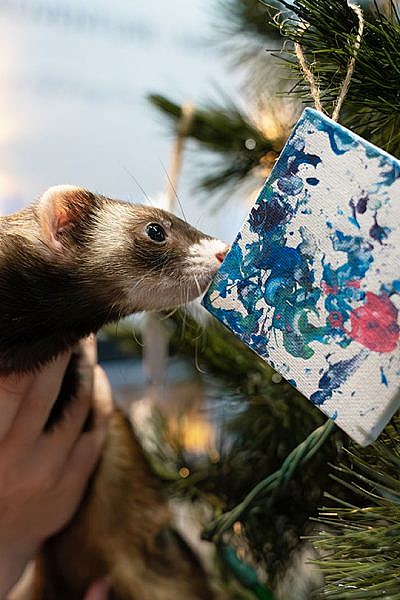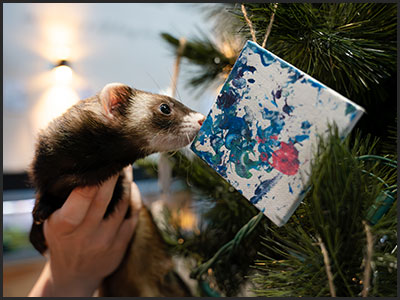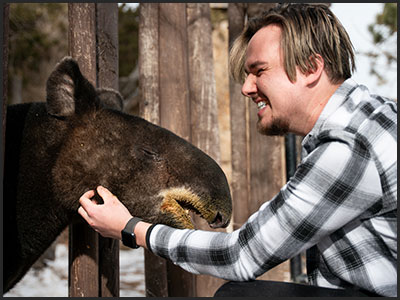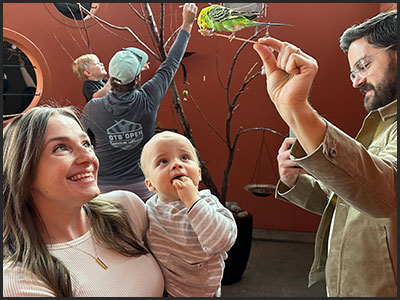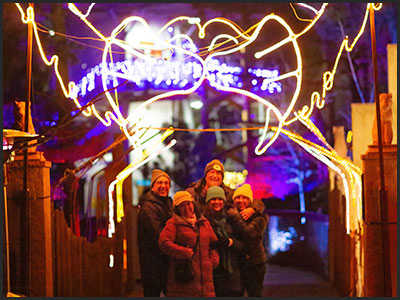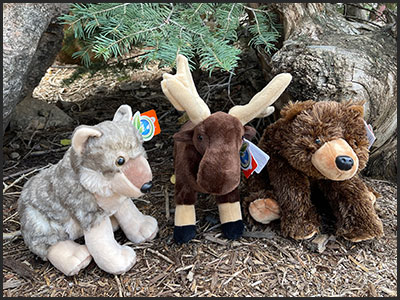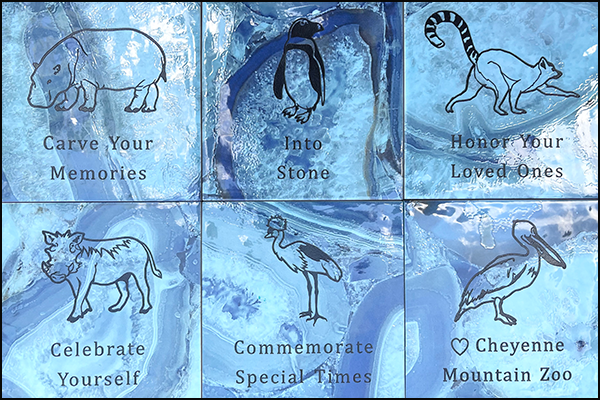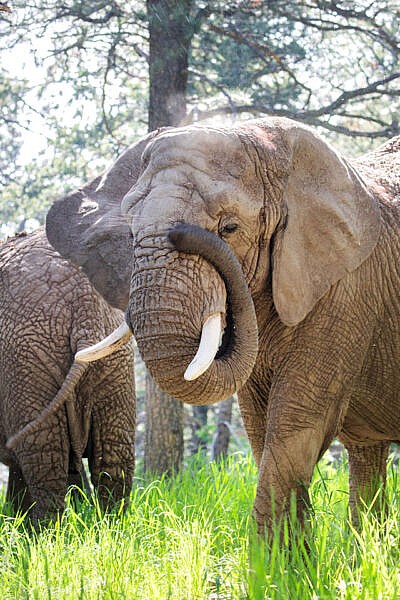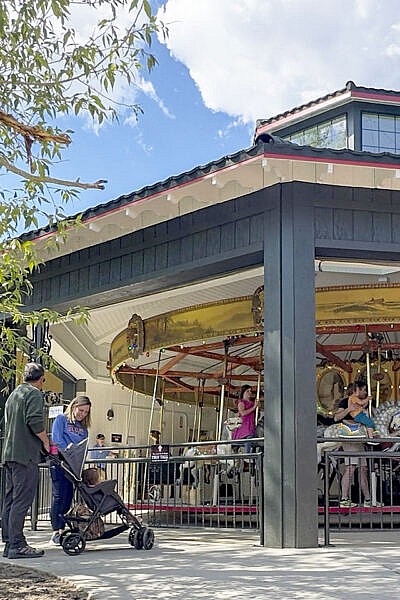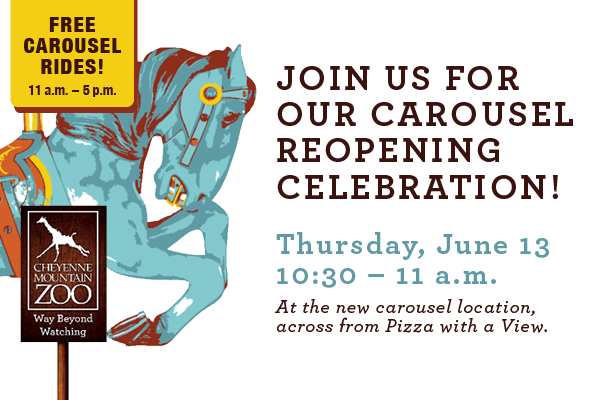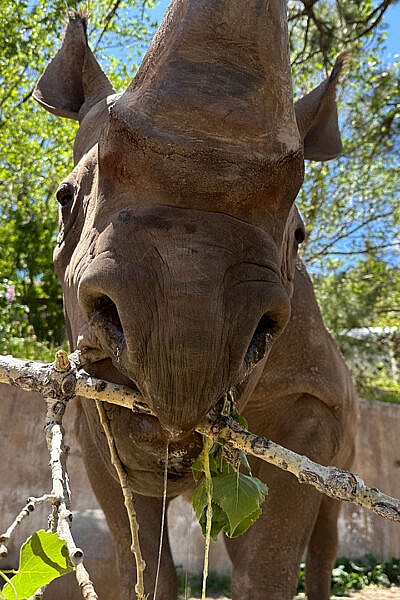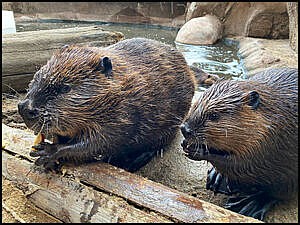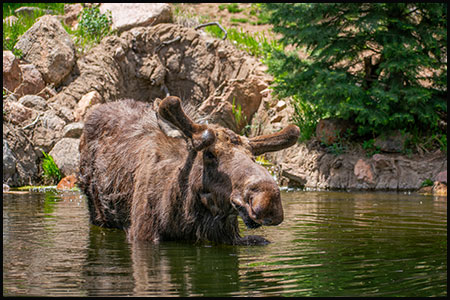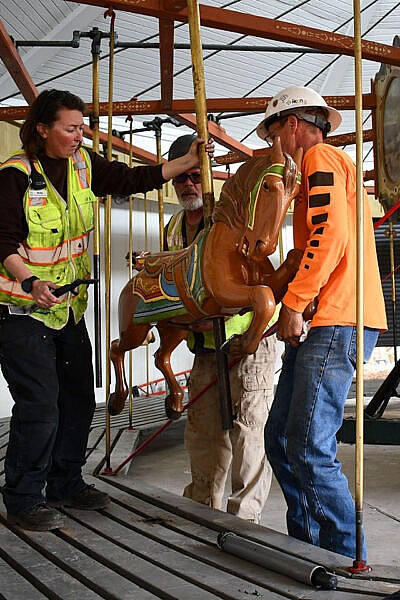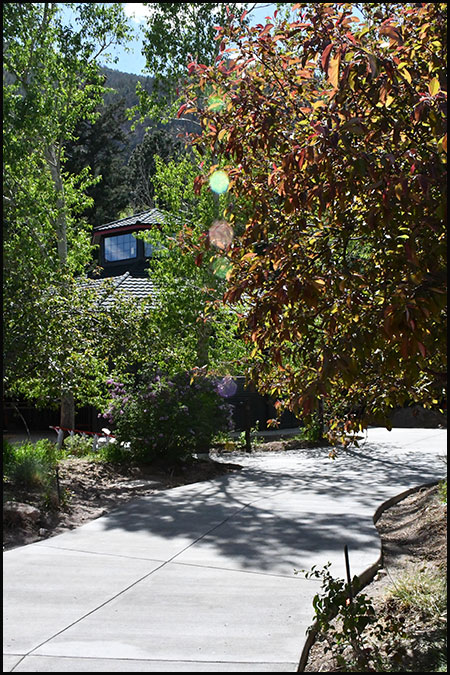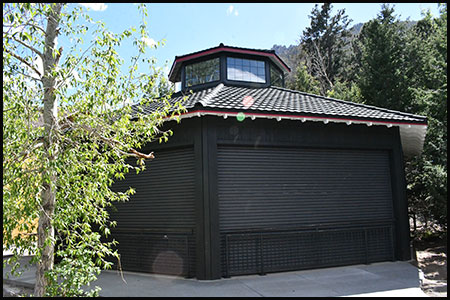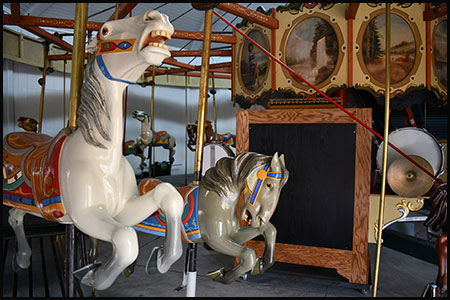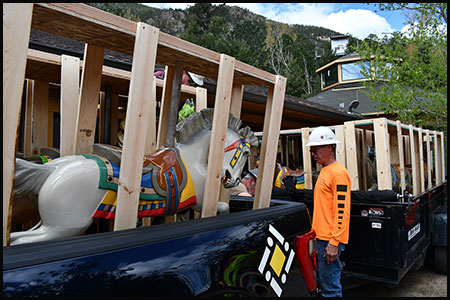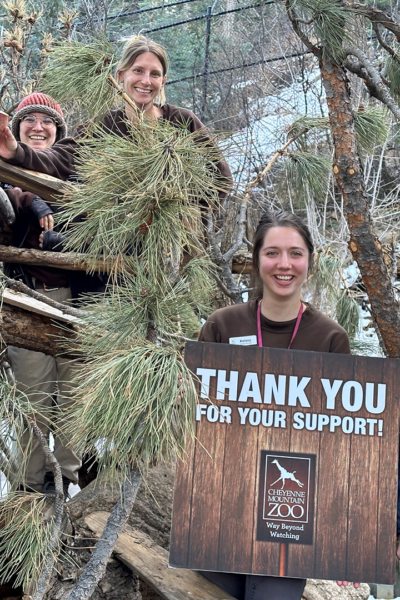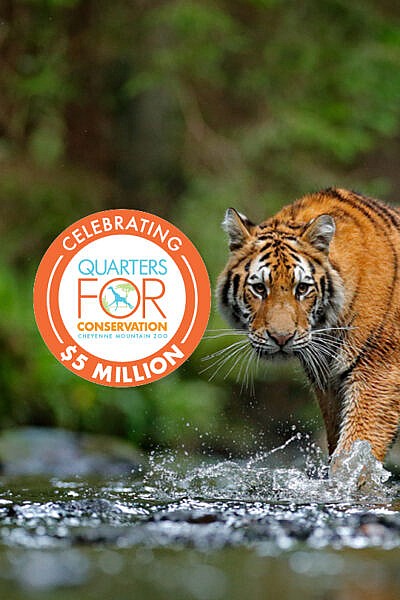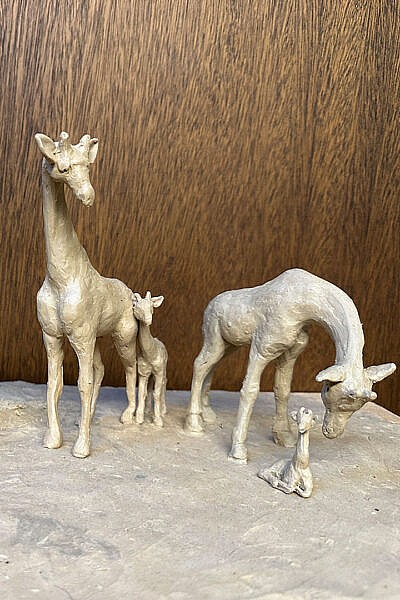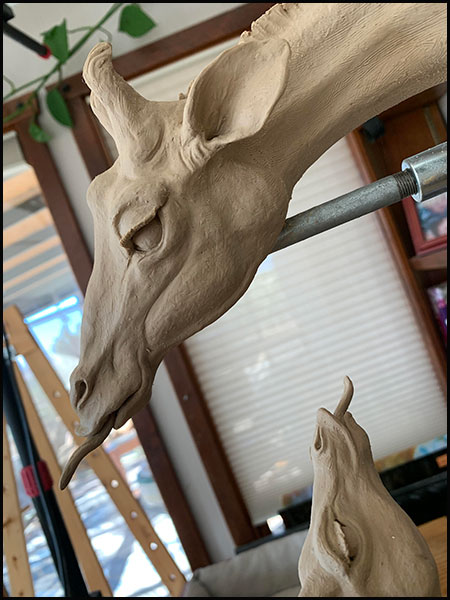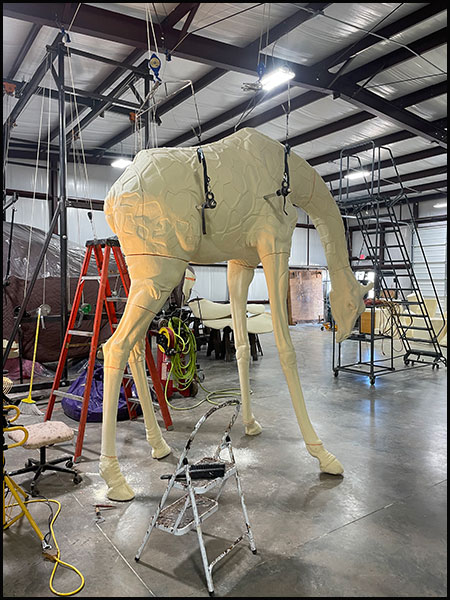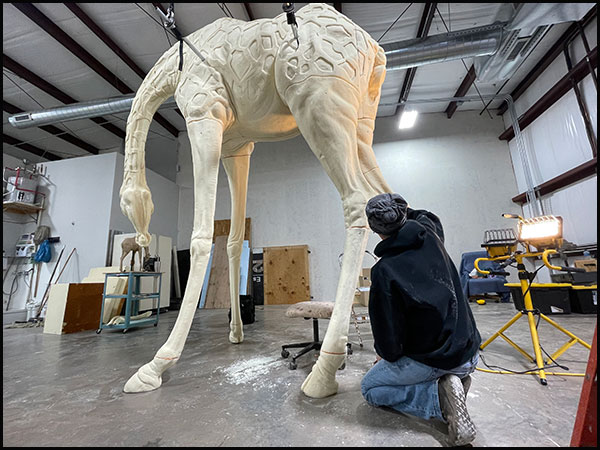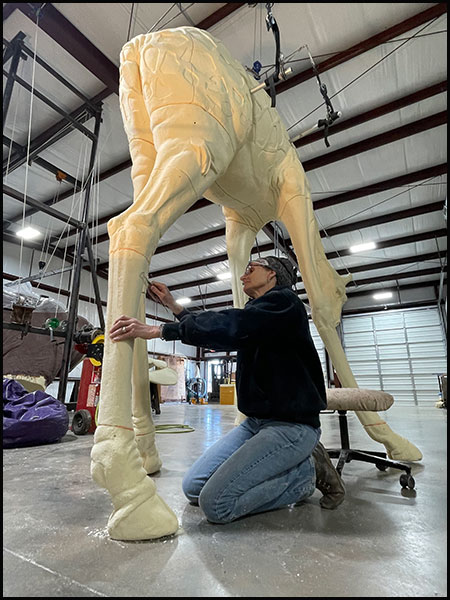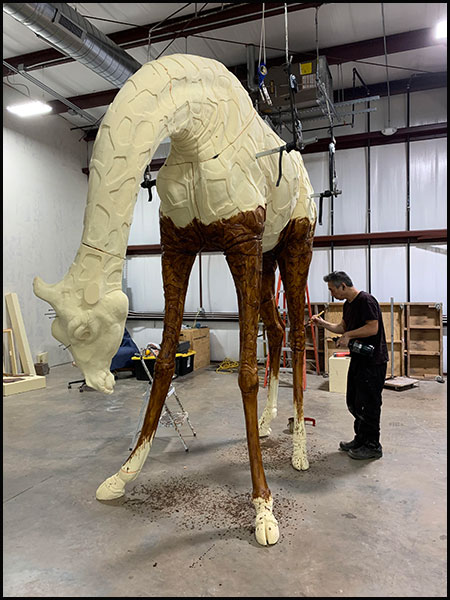26 NIGHTS OF ELECTRIC SAFARI STARTS ON FRI., DEC. 6 – Electric Safari just received its highest ranking ever in a national contest for Best Zoo Lights. Dedicated Cheyenne Mountain Zoo supporters voted daily for nearly a month to earn the annual holiday event the second-place spot among zoos throughout North America.
This is the sixth year in a row Electric Safari has ranked in the top three Best Zoo Lights by USA TODAY’s 10Best Readers’ Choice Awards. It was named Third Best Zoo Lights in North America for the last five years.
The Top Ten Best Zoo Lights in North America are:
1) PNC Festival of Lights at Cincinnati Zoo
2) Electric Safari at Cheyenne Mountain Zoo
3) Lights Before Christmas at Toledo Zoo
4) Saint Louis Zoo Wild Lights presented by Commerce Bank
5) WildLights at The Living Desert Zoo and Gardens
6) Oklahoma City Zoo Safari Lights Presented by OG&E
7) Christmas at the Zoo at Indianapolis Zoo
8) Wild Lights at Riverbanks Zoo & Garden
9) Wild Lights at Detroit Zoo
10) Lights of the Wild at Hattiesburg Zoo
Cheyenne Mountain Zoo is preparing the mountainside with hundreds of thousands of lights for the 34th year of Electric Safari. Twenty-six nights of mountainside lights starts Fri., Dec. 6 through Wed., Jan. 1, 2025 – except on Christmas Eve.
This year, attendees can expect more than 50 acres of twinkling lights, 90+ hand-made light sculptures, giant illuminated animal inflatables, a holiday-safari drone show, plus breathtaking nighttime city views from the side of the mountain.
Electric Safari opens on Fri., Dec. 6 and runs through Wed., Jan.1, 2025 – except Christmas Eve. Zoo members can get early entry, from 4 to 5 p.m. General admission is from 5 to 7:30 p.m. Electric Safari ends at 8:30 p.m.
Electric Safari is free for CMZoo members, and members can attend as often as they’d like! To manage on-site parking throughout the popular event, advance timed tickets are required for members and the general public. Capacity is limited and some nights will sell out. Get tickets and more details at cmzoo.org/electric. Guests can save $5 per ticket by visiting on a non-peak night, detailed on the Pricing Calendar at cmzoo.org/electric.
Attendees will enjoy lit trees, structures and sculptures, installed by Cheyenne Mountain Zoo’s grounds and events team. Larger-than-life illuminated animal inflatables and a nightly holiday-safari themed drone light show (both are weather dependent) will light up the Zoo, making the perfect setting for extra-special holiday memories. If all of those beautiful lights don’t un-Scrooge even the Grinchiest of holiday grumps, a cup of hot cocoa and a visit with Santa ought to do the trick.
Kris Kringle will be in Safari Lodge through Dec. 23 to hear holiday wishes, collect lists and pose for free photos. Take a spin on the historic carousel for $2 per ride, or hop on the Mountaineer Sky Ride for incredible once-a-year views of the holiday nighttime glow of Colorado Springs from the mountainside (both are weather permitting).
Electric Safari wouldn’t be complete without scheduled animal demonstrations and keeper talks! Guests can also visit select animal exhibits. Electric Safari offers paid feeding opportunities with CMZoo’s famous giraffe herd and budgie flock. See an animal schedule, feeding prices and open animal exhibits at cmzoo.org/electric.
Grizzly Grill, Cozy Goat, Pizza with a View and Elson’s Café will be open to serve food and beverages. The Thundergod Gift Shop is open every night for Zoo-themed gifts and hot cocoa.
Electric Safari is supported by our partners at Children’s Hospital Colorado, Livewell Animal Urgent Care, Raising Cane’s Chicken Fingers, U.S. Bank and Toyota. For more information, visit: cmzoo.org/electric.
Electric Safari Fast Facts
• Electric Safari is from 5 to 8:30 p.m. nightly from Fri., Dec. 6 through Wed., Jan. 1, 2025 – except on Christmas Eve. Early entry for members and their paying guests starts at 4 p.m.
• Advance timed tickets are required for members and the general public.
• Tickets are limited and some nights will sell out in advance.
• Electric Safari is free for Zoo members. Members must reserve timed tickets, and can attend as often as they please.
• Santa will greet Electric Safari guests nightly through Mon., Dec. 23. Bring letters and take photos!
• Electric Safari features:
— more than 50 acres of twinkling lights
— more than 90 hand-made light sculptures
— giant illuminated animal inflatables (weather permitting)
— a nightly holiday-safari themed drone show (weather permitting)
— access to the Mountaineer Sky Ride (weather permitting; $4 for members; $5 for general public)
— access to the historic carousel (weather permitting; $2 per person)
— access to most of the Zoo’s animal exhibits, including paid giraffe and budgie feedings
— nightly scheduled animal keeper talks and demonstrations
— get more information and tickets in advance at cmzoo.org/electric
About Cheyenne Mountain Zoo
Cheyenne Mountain Zoological Society was founded in 1926. Today, Cheyenne Mountain Zoo, America’s mountain Zoo, offers comprehensive education programs, exciting conservation efforts and truly fantastic animal experiences. In 2024, Cheyenne Mountain Zoo was voted #5 Best Zoo in North America and CMZoo’s Rocky Mountain Wild was named #2 Best Zoo Exhibit in North America by USA TODAY’s 10Best Readers’ Choice Awards. It is Cheyenne Mountain Zoo’s goal to help guests fall in love with animals and nature, and take action to protect them. Since 2008, CMZoo’s Quarters for Conservation program has raised more than $5 million dedicated to frontline conservation efforts around the world. Of the 237 zoos and aquariums accredited by the Association of Zoos and Aquariums (AZA), Cheyenne Mountain Zoo is one of just a few operating without tax support. Cheyenne Mountain Zoo depends on admissions, membership dues, special event attendance and donations for funding.


